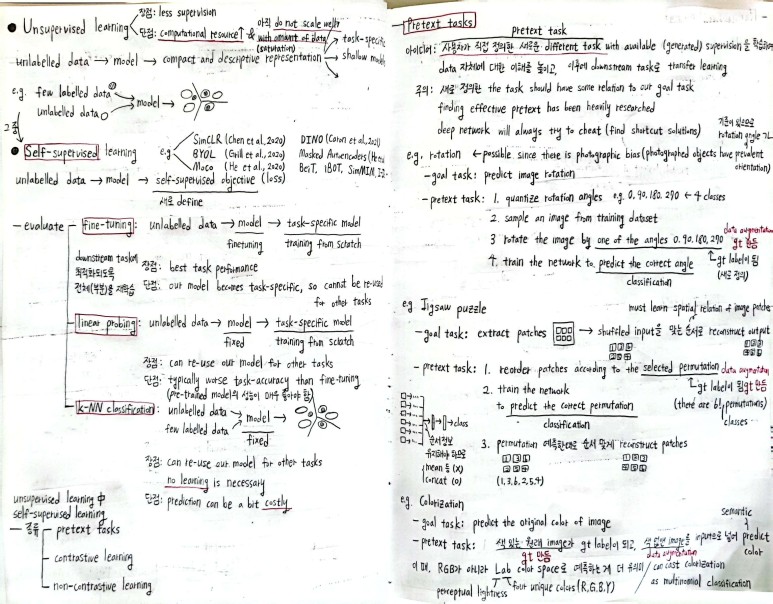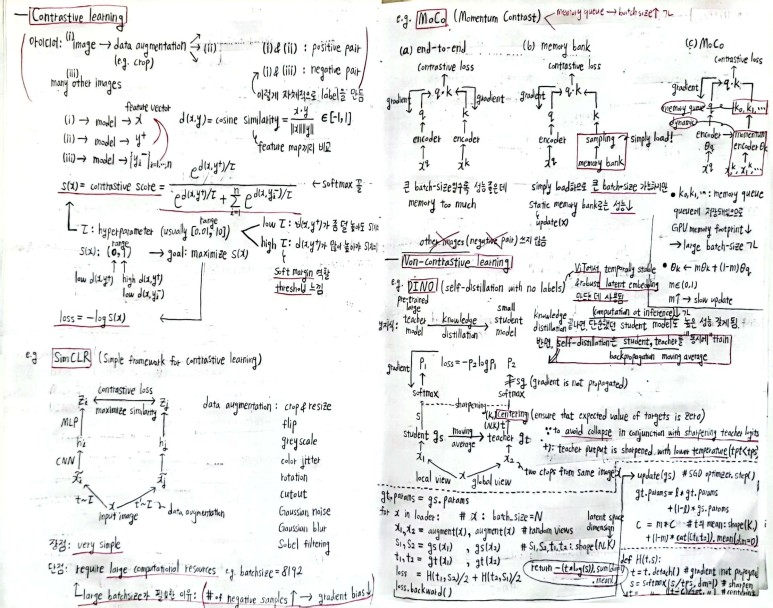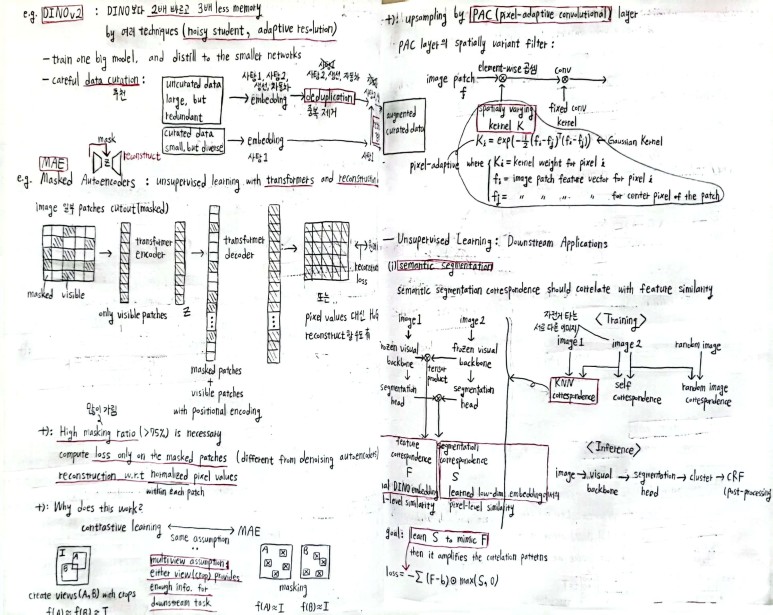Unsupervised Learning
뮌헨공대 (Technical University of Munich)에서 공부한
[IN2375 Computer Vision - Detection, Segmentation and Tracking] 컴퓨터비전 노트 정리
Unsupervised Learning
특징 : fast / costly (much computation)
Self-supervised learning
Evaluation
fine-tuning / linear probing / k-NN classification
Pretext task
사용자가 직접 정의한 새로운 different task (goal task와 관련 있어야 함)
Contrastive Learning
아이디어 :
positive pair (image vs augmented image)와 negative pair (image vs other image) 만들어서 triplet loss 사용 또는 maximize contrastive score (아래 사진 참고)
- SimCLR (Simple framework for Contrastive Learning) :
two augmented images에 대해 maximize similarity b.w. feature maps
장점 : simple
단점 : negative samples 수가 많을수록 gradient bias가 줄어드므로
large batchsize가 필요한데 그러면 large computation 필요
- MoCo (Momentum Contrast) :
- memory queue를 통해 GPU memory footprint 작아서 large batchsize 가능
- dynamic update of momentum encoder로 성능 향상
Non-Contrastive Learning
other images (negative pair) 쓰지 않음
- DINO (self-distillation with no labels) :
ViT 등에서 robust latent embedding 만드는 데 사용
entering : teacher sharpening할 때 collapse되는 것을 방지하기 위해 moving average of center를 빼줌
sharpening : teacher가 student보다 lower temperature로 sharpened
- DINOv2 :
DINO보다 2배 faster, 3배 less memory by noisy student, adaptive resolution, data curation, …
- MAE (Masked Autoencoders) :
high masking ratio 필요
masked patches를 reconstruct한 뒤 이에 대해서만 loss 계산
multi-view assumption
view(crop) provides enough info. for downstream task
PAC (pixel-adaptive conv.) layer
conv.를 하기 전에 spatially varying kernel을 곱함
Downstream Applications
semantic segmentation 에서 KNN correspondence
two image에 대해 “segmentation correspondence”가 “feature(DINO) correspondence”를 모방하도록 학습
motion-based VOS
network G : image & optical flow -> object mask
network I : masked optical flow & image -> reconstruct optical flow
Contrastive Random Walk (object tracking)
아래 사진 참고.
cycle consistency loss (cross-entropy loss b.w. label_t=0 and label_t=T)




Enjoy Reading This Article?
Here are some more articles you might like to read next: